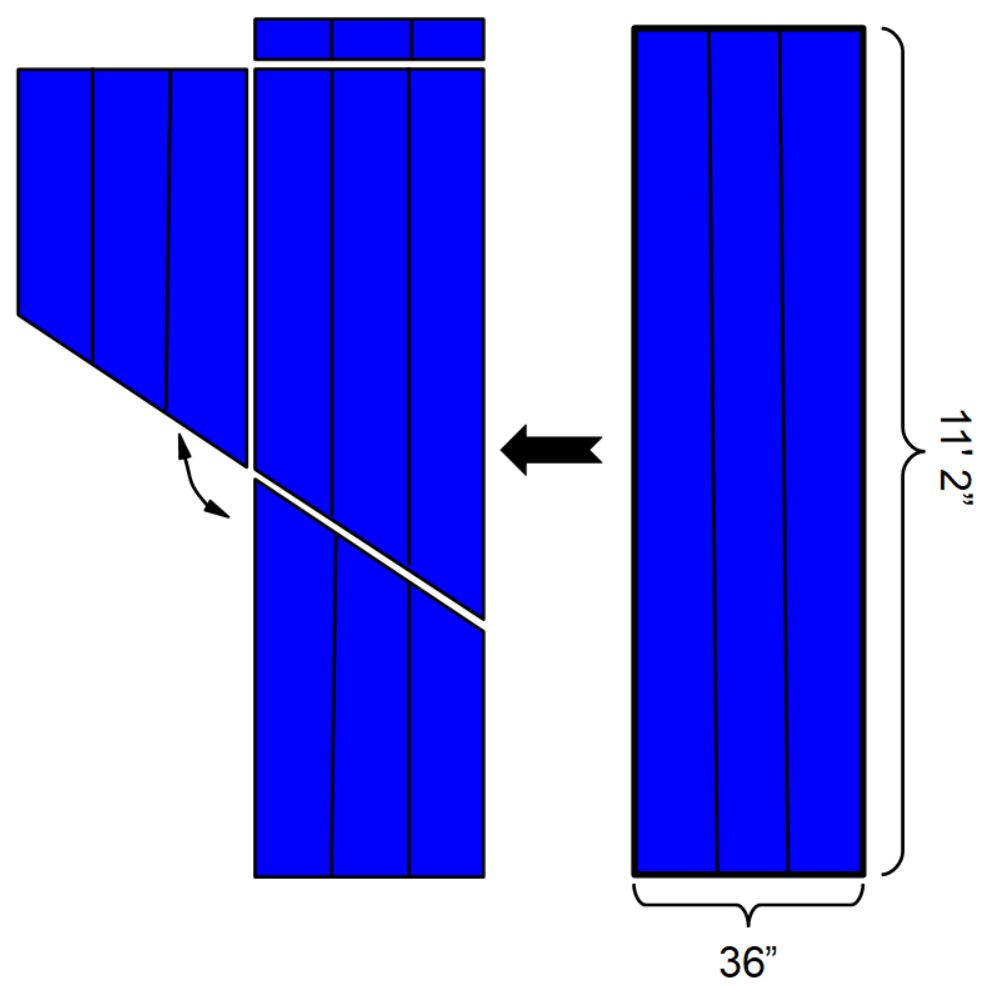Siding
Siding is the outer covering or cladding of a building's exterior walls. Siding is typically installed to protect the structure from the elements such as rain, snow, wind, and sunlight, while also enhancing the aesthetic appeal of the building.
Siding materials can vary widely and may include options such as vinyl, wood, metal, fiber cement, stucco, brick, stone, and synthetic materials like engineered wood or composite panels. The choice of siding material often depends on factors such as durability, cost, maintenance requirements, climate conditions, and architectural style preferences. Most siding materials dictate that the siding runs horizontally (left to right). Horizontal siding includes vinyl and wood (e.g., cedar) which are the two most commonly seen. Metal panels are growing in popularity for both metal siding and roofing and are applied vertically (up and down) to either 4x8 sheets (plywood or OSB) or to horizontal boards called girts. Metal panels used as siding can be cut to different lengths and run the entire length of the wall in many cases. These panels are typically screwed into sheathing or girts to be
 attached to the building. The metal panel screws have a synthetic collar to create a water-tight bond. Non-metal siding is usually nailed to sheathing with a 12" to 16" spacing of the nails.
attached to the building. The metal panel screws have a synthetic collar to create a water-tight bond. Non-metal siding is usually nailed to sheathing with a 12" to 16" spacing of the nails.
Parent Categories
Subcategories
Siding Calculators and Collections
Siding Equations
- Barn Paint Calc KurtHeckman Use Equation
- Board Price Survey Tool KurtHeckman Use Equation
- Corrugated Metal Paint or Coating Volume KurtHeckman Use Equation
- Curved Dome Greenhouse Surface Area KurtHeckman Use Equation
- Girts for Building KurtHeckman Use Equation
- Horizontal Siding Gambrel Wall KurtHeckman Use Equation
- Metal for Shed (Roof and Walls) KurtHeckman Use Equation
- Metal Siding for Gable End with Door KurtHeckman Use Equation
- Metal Siding for Gable Ends KurtHeckman Use Equation
- Metal Siding for Wall KurtHeckman Use Equation
- Metal Siding Gambrel Wall KurtHeckman Use Equation
- Paint for Corrugated Surfaces KurtHeckman Use Equation
- Paint for Gambrel Wall KurtHeckman Use Equation
- Pole Barn Materials KurtHeckman Use Equation
- Pole Barn Metal Roof and Siding Cost KurtHeckman Use Equation
- Quonset Hut Surface Area KurtHeckman Use Equation
- Screws for a Metal Shed or Run-in KurtHeckman Use Equation
- Screws for Metal Siding Gabel End with Door KurtHeckman Use Equation
- Screws for Metal Siding Gambrel End Wall KurtHeckman Use Equation
- Screws for Metal Siding on Gable End KurtHeckman Use Equation
- Screws for Metal Siding Wall KurtHeckman Use Equation
- Siding for a Gable End Wall with Door KurtHeckman Use Equation
- Siding for Gable End KurtHeckman Use Equation
- Siding for Rectangular Wall KurtHeckman Use Equation
Siding Data Items
- Ag Panel Metal Pricing Date KurtHeckman Use Data Item
- Ag Panel Metal Pricing Outer Corner KurtHeckman Use Data Item
- Ag Panel Metal Pricing Panels KurtHeckman Use Data Item
- Ag Panel Metal Pricing Source KurtHeckman Use Data Item
- Ag Panel Metal Screws Pricing KurtHeckman Use Data Item
- Corrugated Panels Low Price KurtHeckman Use Data Item
- Corrugated Panels Premium Price KurtHeckman Use Data Item
- Metal Panel Screws per Square Foot KurtHeckman Use Data Item
Siding Datasets
Siding WikiClips
- 4x8 Sheathing Information KurtHeckman
- Metal Ag Panel Information KurtHeckman
- Metal Panel Pricing Information KurtHeckman
- Metal Panel Roof and Siding Info KurtHeckman
- Metal Panel Screws Info KurtHeckman
- Metal Siding Calculator Info KurtHeckman
- Pole Barn Calculator Info KurtHeckman
- Siding Calculator Information KurtHeckman
- Siding Information KurtHeckman
- Simple Building Calculator Info KurtHeckman
- Attachments
No attachments |
